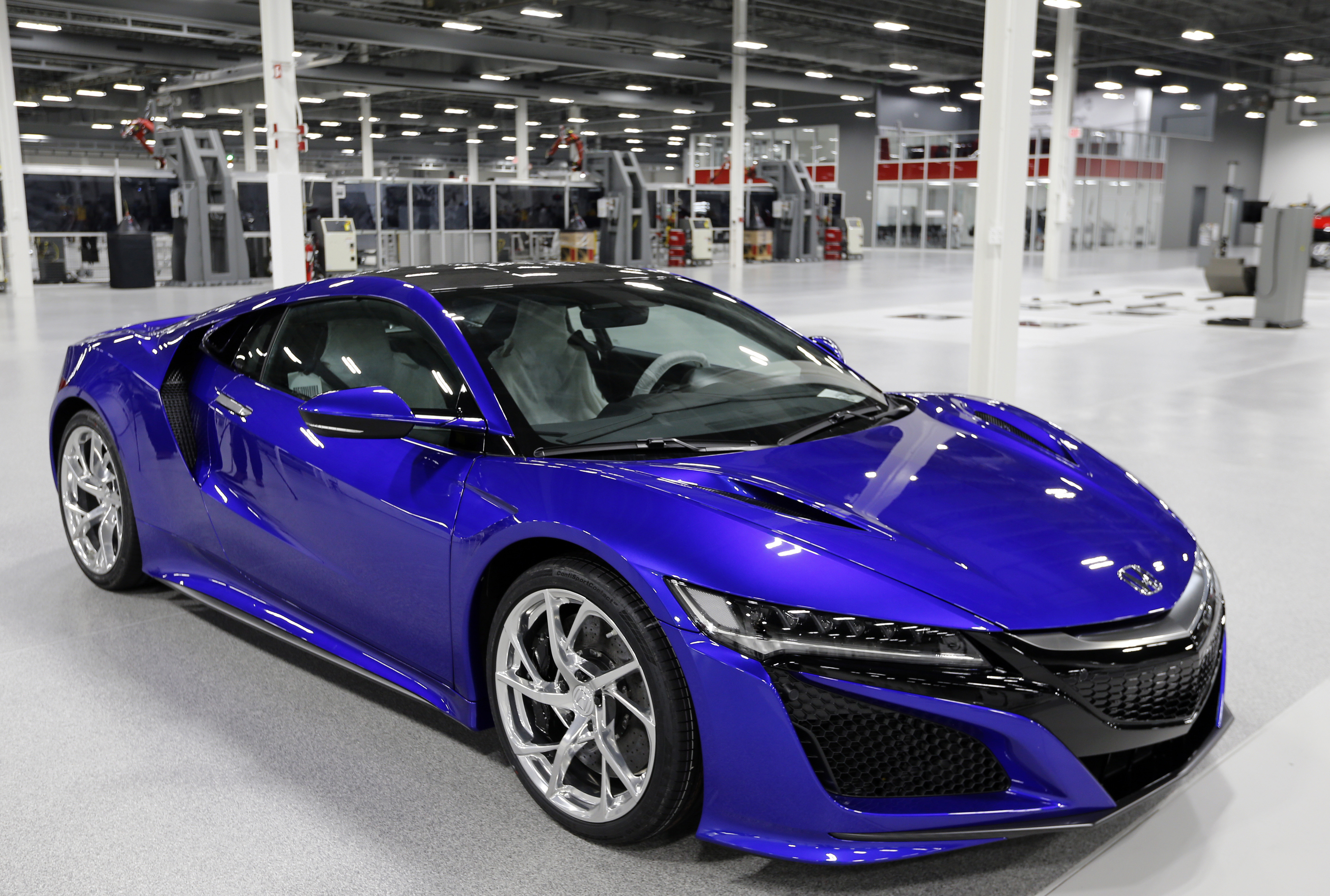MARYSVILLE, Ohio — It's easy to miss the big picture when it comes to the 2017 Acura NSX and the small plant where it is built in the rolling hills of central Ohio.
Acura executives are quick to say that the low-slung, 2017 Acura NSX with all of its curvy, seductive lines is the pinnacle expression for this brand.
They will say that the new NSX is intended to be the start of a new era of performance-oriented cars for Acura, a brand once known for performance that lost its way over the years.
And they will say they are confident that the new NSX has recaptured the magic of the original NSX that sports car enthusiasts immediately embraced when the first NSX debuted in 1991. Then, they will be upfront with their hope that the NSX will help to generate attention for the entire Acura brand.
But those who understand and digest all of those goals and aspirations will still fall short of understanding the importance of the NSX.
Honda is building its new supercar in a 206,000-square-foot plant that is designed to be a cauldron of new, high-tech manufacturing processes that Honda can learn from and, in some cases, adapt at other plants around the world. The plant, which Acura calls its Performance Manufacturing Center, along with the nearby Honda Heritage Center also is designed to be a showpiece for customers and tourists.
"When our team got together, we brainstormed what we wanted this plant to be. The way we looked at this whole project is based on Formula 1 racing," said Clement D'Souza, who led the creation of the innovative plant.
If it all goes as planned, the 2017 Acura NSX and the plant will evolve into the crown jewel of Honda’s North American manufacturing presence and will become the envy of other automakers who lack similar gleaming showpieces.
"We wanted to create a new experience," D'Souza said. "Customers will get a lot better connection with the plant itself and an understanding how their car is being put together and the quality level and the craftsmanship."
Ted Klaus, the global project leader for the NSX, said the role of the car, "is really to unleash the best and brightest ideas that exist within our company — to create an emotional North Star ... for our brand."
The workers here already have developed several new manufacturing processes that Honda is adapting elsewhere. Honda also has applied for patents for 12 new technologies and manufacturing processes developed by technicians at the plant.
Auto dealer and NASCAR team owner Rick Hendrick, who purchased the very first NSX for $1.2 million, said during a May 24 celebration at the plant that he predicts the NSX will draw new customers to the brand..
"The most amazing thing that I saw today were the smiles on everybody’s face when I walked through the plant," said Hendrick, one of the nation's largest auto dealers and a NASCAR team owner. "You’ve got something special here. You have a culture — you can’t buy culture, and you sure can’t buy the enthusiasm that you have."
When Honda set out to build a new NSX super car, it knew it had to totally rethink how it produces cars. Honda, a mainstream automaker, is accustomed to making hundreds of cars per day at some of its plants. Honda and Acura make good cars — Japan's No. 2 automaker is known for its quality.
Andy Stockton, associate chief adviser for the Performance Manufacturing Center, said more than 6,000 Honda workers applied for about 106 jobs at the plant. That allowed Honda to pick its smartest, best-performing technicians and workers.
Still, the workforce had no experience in the type of plant Honda wanted to create. The precision necessary to build a high-performance super car with a $156,000 starting price is vastly different than mass production.
"One of the biggest challenges we had to overcome was changing the mind-set from producing 1,000 units per day to 10," D'Souza said. "Trying to get everyone to think small volume, trying to get them to understand the level of craftsmanship or quality that this level of customer is expecting in the quietness of their vehicles."
To change that mindset, the manufacturing engineering team visited about 25 plants to see how other automakers make their best cars.
They toured plants operated by Audi, Corvette, Ferrari, Lamborghini, McLaren, Porsche and even Sutphen — a Dublin, Ohio-based manufacturer of fire trucks.
"With some we had to take the general customer tour," D’Souza said. "But others were very open with us."
McLaren was very cooperative, D'Souza said, because Honda and McLaren are partners in Formula 1 racing and the two companies trust each other. Porsche only allowed the Honda team to take a general customer tour.
At Sutphen, Honda's team spent a lot of time talking to the welders and gained insight into new welding techniques.
Acura only plans to make about eight to 10 cars per day at the plant. The idea is keep both quality and demand high by producing the cars carefully. Acura plans to sell only about 800 cars annually in North America and another 800 globally.
Despite the intense focus on small batch manufacturing, D'Souza said the idea also was to create a plant where the automaker could test new and innovative manufacturing processes.
"We looked at this as a crucible, as a test bed," he said. "And we had a theme, what we call 8 to 800. If you can do something with 8 cars (per day), now can you do it with 800? And pull the rest of the Acura product up with that? It’s not only the materials you use, but the processes."

![AP ACURA NSX OHIO A F FILE USA OH [image : 85227690]](http://www.gannett-cdn.com/media/2016/06/01/USATODAY/USATODAY/636003385236790194-nsx.JPG)

